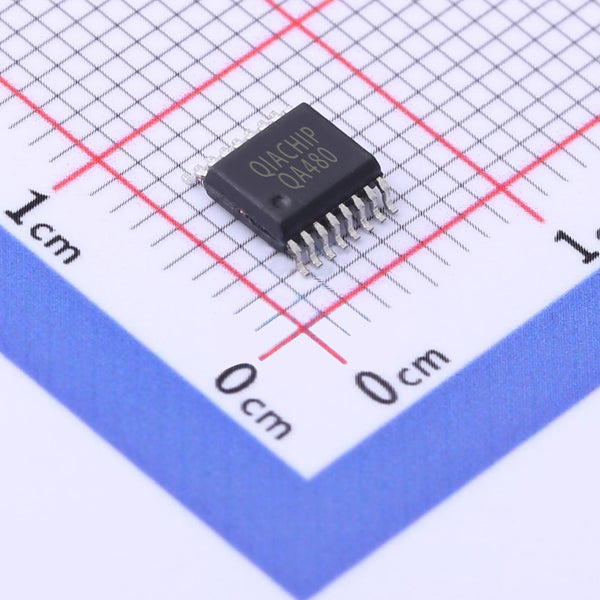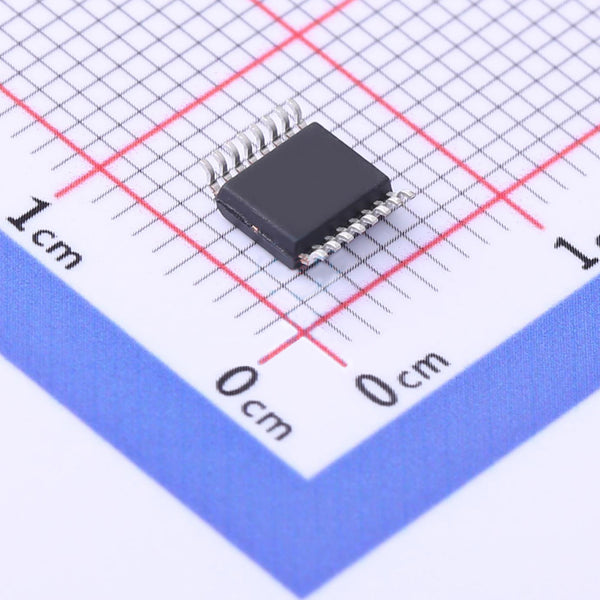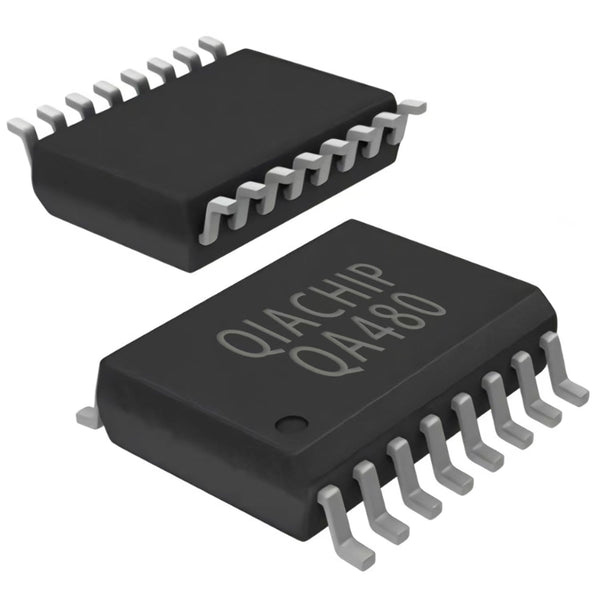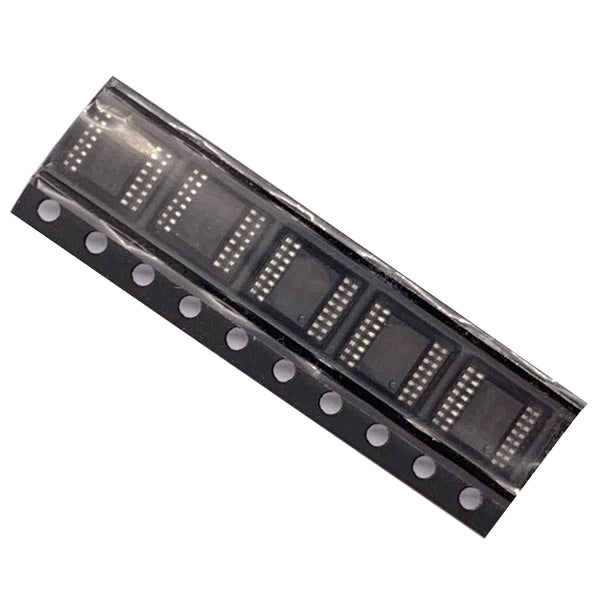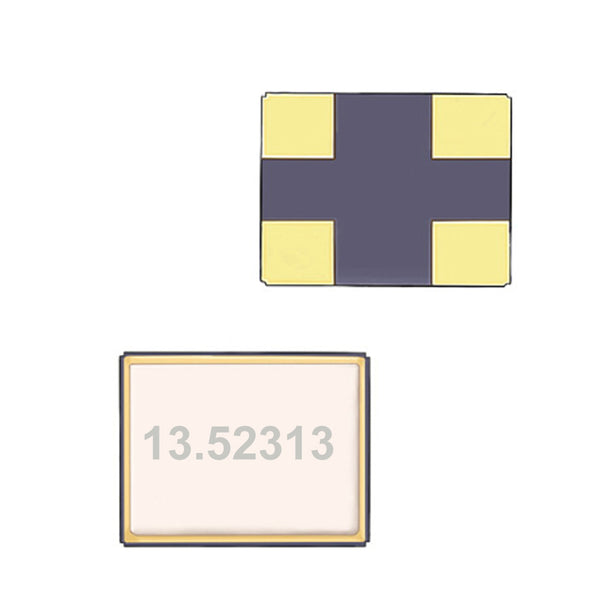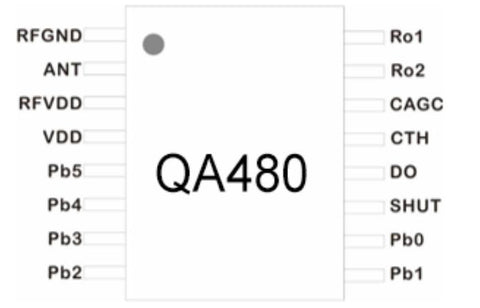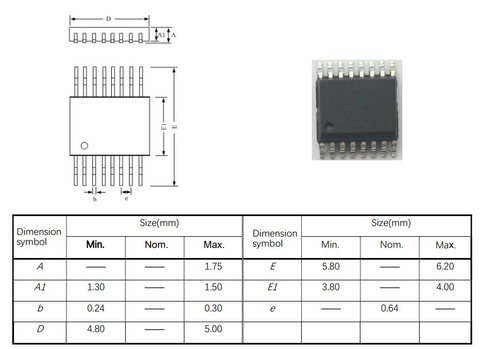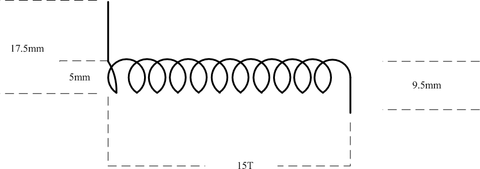RX480E-4 Reiceiver Module Decoding chip 433m 315m 4 channel Remote control switch EV1527 Decode IC QA480 Datasheet Arduino DIY
QA480
4 Channel with Decoding chip
4 channel Wireless Remote Control switch Chip
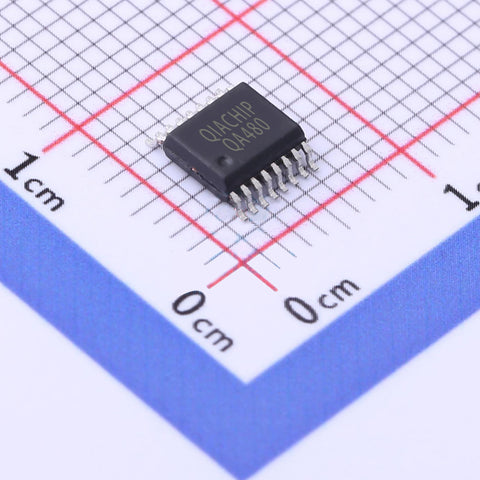
Features
1、Including RF receiver chip, commonly used in data transmission and control system.
2、Can operate independently, without external MCU control.
3、Compatible with fixed code coding chips: EV1527, SC1527,
HS1527, RT1527, etc.
4、Automatic identification of coding chip type.
5、Momentary, Latched,Toggle functions can be converted at will, without jumpers, long-term stability.
6、Code-to-code learning, no manual coding required.
7、Built-in memory, safe and reliable.
8、Ultra-wide working voltage.
9、Adopt dense-pin SSOP16 package, small size, more suitable for the application of small volume products.
10、It supports 4-bit data code output, can correspond to 4 keys of
"ABCD" on the remote control, and has decoding effective indication output.
Application
Wireless remote switch
Remote motor control
security system
Access control system
Building community automation and fire protection
Street light control system
Smart Home Controller
Performance parameters
ASK/OOK RF reception
Operating voltage: 2.0V - 5.0V
Frequency range: 300MHz - 450MHz
Receive sensitivity: -111dBm
Receive power consumption: 4.5-6.6mA
Standard CMOS interface control and decode data output
Description
Application circuit

The application circuit leads out four outputs from the chip, which are D3, D2, D1 and D0 respectively. The code values of the corresponding remote controller are 1000, 0100, 0010 and 0001 respectively, that is, 8, 4, 2 and 1. Here, take the Toggle (self-locking) mode as an example
(press the paired remote control button once, and the corresponding pin on the module will output high level, and then press the same paired remote control button once, and the corresponding pin on the module will output low level).
When you use a four key RF remote control and the code values of the remote control are 8, 4, 2 and 1 respectively, press the K1 key on the module twice, wait for the indicator LED1 on the module to turn on, and then press any key on the remote control. After the module receives the RF signal, the LED indicator flashes for three times and then goes out, indicating that it has been successfully set to the Toggle (self-locking) mode
When you press the key with the code value of 8 on the remote
control once, D3 pin will output high level, and then press the same remote control key once, D3 pin will output low levelWhen you press the key with the code value of 4 on the remote control once, the D2 pin outputs high level, and then press the same remote control key once, the D2 pin outputs low level
When you press the key with the code value of 2 on the remote control once, D1 pin will output high level, and then press the same remote control key once, D1 pin will output low level
When you press the key with the code value of 1 on the remote control once, D0 pin will output high level, and then press the same key on the remote control once again, D0 pin will output low level
Crystal oscillator can be provided by QIACHIP
Function description and mode setting
Code clearing reset function: after continuously pressing the
learning button on the module for 8 times, the output of all output
pins changes to low level, and the LED indicator on the module
flashes for 8 times. After clearing all stored remote controls on the
module, the indicator on the module goes out
Momentary mode: press the learning button on the module once,
and the LED indicator flashes once. After the LED indicator lights up,
press any key on the remote controller to be matched, and the LED
indicator on the module flashes continuously for 3 times, indicating
that the matching is successful.
Then, press and hold the button of the matched remote controller,
the corresponding pin on the module outputs high level, release the
button of the matched remote controller, and the corresponding pin
output on the module changes to low level.
Toggle function: press the learning button on the module twice,
and the LED indicator flashes twice. After the LED indicator is on,
press any key on the remote controller to be matched, and the LED
indicator on the module flashes continuously for 3 times, indicating
that the matching is successful.
After that, press the button of the matched remote controller, and
the corresponding pin on the module outputs high level and remains
unchanged. Press the same button again, and the corresponding
pin output on the module changes to low level.
Latched function: press the learning button on the module for 3
times, and the LED indicator flashes for 3 times. After the LED
indicator lights up, press any key on the remote controller to be
matched, and the LED indicator on the module flashes for 3 times
continuously, indicating that the matching is successful.
After that, press any button of the matched remote controller, the
corresponding pin on the module outputs high level, the other pins
output low level, only one of the four outputs pin outputs high level,
and the other outputs are low level.
Two channel Toggle and two channel Momentary: press the
learning button on the module for 4 times, and the LED indicator
flashes for 4 times. After the LED indicator lights up, press any key
on the remote controller to be matched, and the LED indicator on
the module flashes continuously for 3 times, indicating that the
matching is successful.
After that, press the button of the matched remote controller (keys
with code values of 8 and 4 corresponding to a and b), and the
corresponding pin (D3 and D2) on the module outputs high level and
remains unchanged. Press the same remote controller button again
(keys with code values of 8 and 4 corresponding to a and b), and
the output of the corresponding pin (D3 and D2) on the module
changes to low level.
Press and hold the button of the matched remote controller (the key
with code values of 2 and 1 corresponding to C and D), the
corresponding pin (D1 and D0) on the module outputs high level,
release the matched remote controller button (the key with code
values of 2 and 1 corresponding to C and D), and the output of the
corresponding pin (D1 and D0) on the module changes to low level.
Two channel Latched and two channel Momentary: press the
learning button on the module for 5 times, and the LED indicator
flashes for 5 times. After the LED indicator lights up, press any key
on the remote controller to be matched, and the LED indicator on
the module flashes continuously for 3 times, indicating that the
matching is successful.
After that, press the buttons of the matched remote controller (keys
with code values of 8 and 4 corresponding to a and b), the
corresponding pins (D3 and D2) on the module output high level,
and the output of the other output pins (D2 and D3) on the module
changes to low level.
Press and hold the button of the matched remote controller (the key
with code values of 2 and 1 corresponding to C and D), the
corresponding pin (D1 and D0) on the module outputs high level,
release the matched remote controller button (the key with code
values of 2 and 1 corresponding to C and D), and the output of the
corresponding pin (D1 and D0) on the module changes to low level.
Two channel interlock and two channel self-lock: press the
learning button on the module 6 times, the LED indicator blinks 6
times, wait for the LED indicator to light up, press any key on the
remote control that needs to match, and the LED indicator on the
module blinks 3 times continuously, then the match is successful.
After that, press the buttons of the matched remote control (keys
with codes A and B corresponding to 8 and 4), the pins above the
module (D3 and D2) output a high level, and the pins on the module
(D2, D3) output a low level.
Press the button of the matched remote control (the key with C and
D corresponding code values of 2 and 1), the pin on the module (D1,
D0) outputs a high level and remains unchanged, press the same
remote button again (the key with C and D corresponding code
values of 2 and 1), and the pin output on the module (D1, D0) turns
to a low level.
Two channel Latched and two channel Latched: press the
learning button on the module 7 times, the LED indicator blinks 7
times, wait for the LED indicator to light up, press any key on the
remote control that needs to match, and the LED indicator on the
module blinks 3 times continuously, then the match is successful.
After that, press the buttons of the matched remote control (keys
with codes A and B corresponding to 8 and 4), the pins above the
module (D3 and D2) output a high level, and the pins on the module
(D2, D3) output a low level.
To press the buttons of the matched remote control (keys with codes
C and D corresponding to 2 and 1), the pins on the module (D1 and
D0) output high level, and the other pins on the module (D0, D1)
output low level
Package
Precautions
RF devices are voltage sensitive devices. If the power supply is unstable
or the ripple is large, add a filter to the power input to ensure that the power
supply voltage does not exceed the maximum operating voltage of the
product.
This device is an electrostatic sensitive device, anti-static measures must
be used in transportation and use.
When patching, make sure that the temperature does not exceed 245 degrees
It is recommended not to use a rubber-covered spring antenna in
application to ensure a better product yield.
The product description is subject to change without notice
Antenna
General application
For general applications, antennas can be directly adapted to
market specifications as follows:
315M antenna
The antenna core diameter (including the outer skin) is 1.0mm
(excluding the outer skin) is 0.5mm;
The length of the wire at the welding end is 17.5mm and that of the
wire at the antenna end is 9.5mm.
The diameter of the antenna winding (including the outer skin) is
5mm; Winding turns 15
433M antenna
Wire length at welded end is 10mm; The total length of antenna
wire straightening is 170mm; Winding turns are 9 turns.
Click to buy antenna








